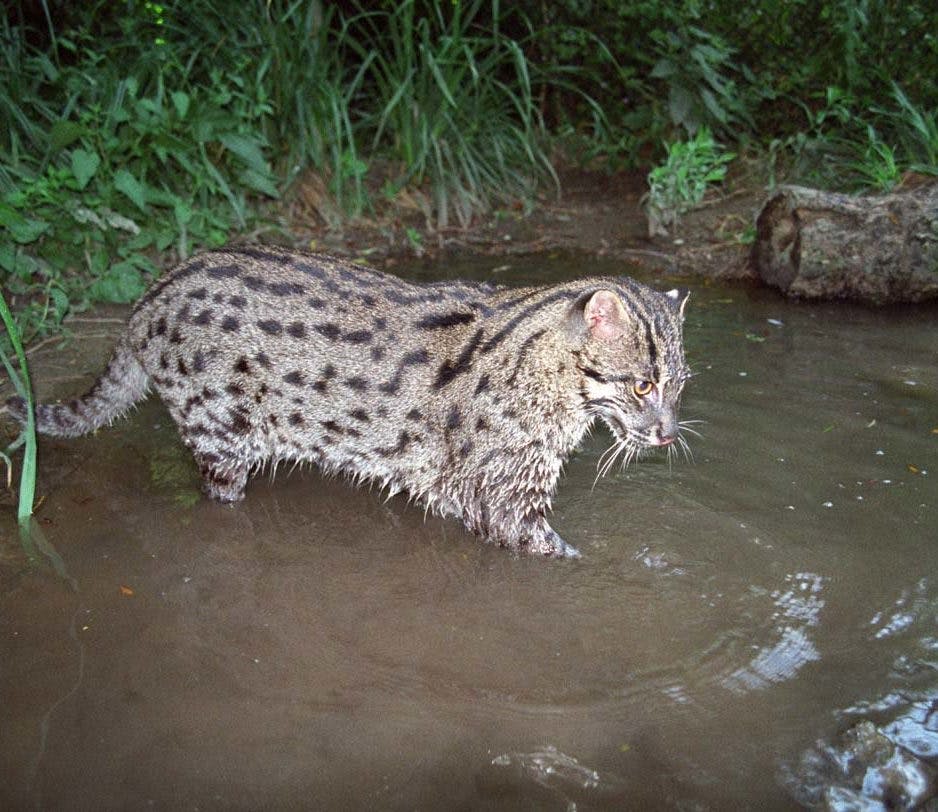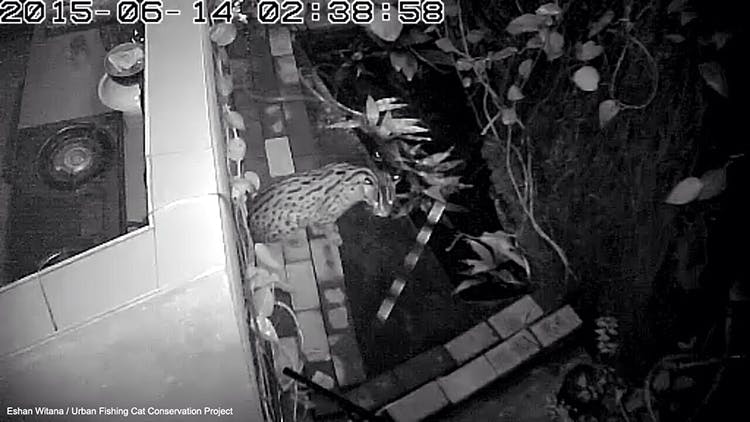fishing cat
The Cool Cat You’ve Likely Never Heard Of
Fishing cats are striking animals--stocky and about twice the size of domestic cats. Spotted a bit like Leopards, they also sport stripes running down the back of their heads along their backs.
Native to regions throughout southern Asia, the Fishing Cat’s range and distribution is a little bit of a question mark. They have been recorded throughout south Asia, from far eastern Pakistan, India, Nepal, Sri Lanka, Bangladesh, Myanmar, Cambodia, Thailand and Indonesia. The IUCN Red List of Threatened Species classifies them as Vulnerable, but several distinct populations are endangered and they may have vanished entirely from the Indonesian island of Java.

Fishing Cats face a number of threats: they are hunted and poached for food and their hides. Their native marshland habitats are disappearing. They sometimes eat people’s chickens, pets, and decorative fish, which has made them unpopular in some places. And they are sometimes mistaken for young Leopards and killed out of fear.
But the biggest challenge in Fishing Cat conservation is that most people have never heard of the animal and consequently have no idea that they need help.
Tracking Fishing Cats Through an Urban Landscape
Fishing Cats are nocturnal and elusive, which may explain why they are not better known. Their spots help them hide, and they are easily mistaken for a large domestic cat or a small Leopard. Their behavior makes them difficult to track and count. Camera traps are often the only way to study them.

Though Fishing Cats live in wetlands, research by the Urban Fishing Cat Project— a partner of Re:wild in Sri Lanka— has shown that they can adapt to city life. Fishing Cats are turning up in gardens, on roofs, and, especially, eating ornamental fish. The Urban Fishing Cat Project collaborates with the Sri Lankan Department of Wildlife Conservation and runs interference when Fishing Cats eat expensive fish. But much of the time, people are enchanted to learn that these cats, like little Leopards, are roaming the streets—and sewers—of Colombo, Sri Lanka.
Raising the Fishing Cat’s Profile Locally
Small Cat Advocacy and Research, a partnership between Urban Fishing Cat Project and researcher Ashan Thudugala, are helping small wild cats with their public relations strategy in Sri Lanka. The group raises awareness about Fishing Cats, Jungle Cats and Rusty-spotted Cats.

In Nepal, Re:wild associate Sagar Dahal also studies Fishing Cats in cities and other places that seem a far cry from the wild. He has been working to perfect a predator-proof chicken coop to keep the Fishing Cats away from people’s livelihoods, and educating government officials about the existence and plight of the Fishing Cat.
In India, Murthy Kantimahanti, another Re:wild associate, works primarily outside protected areas, where humans and Fishing Cats run afoul of each other. He sets camera traps and trains part-time research assistants from the local populations, in addition to educating local school children.


